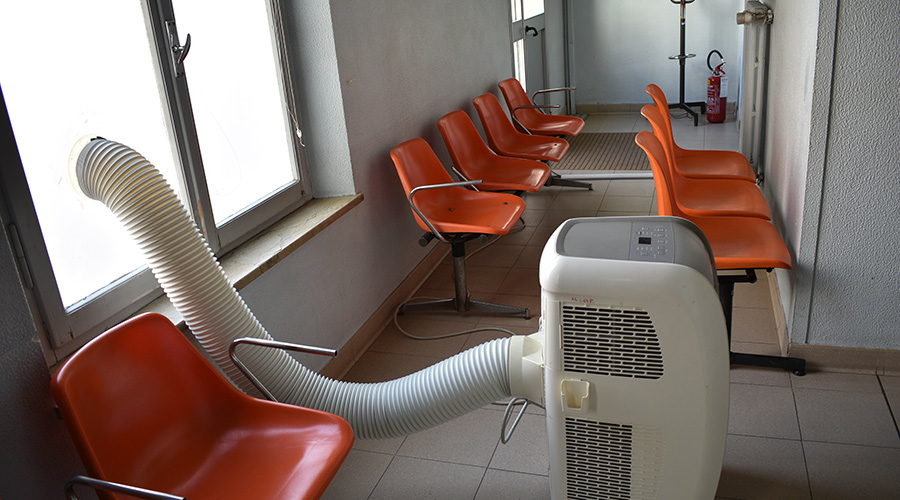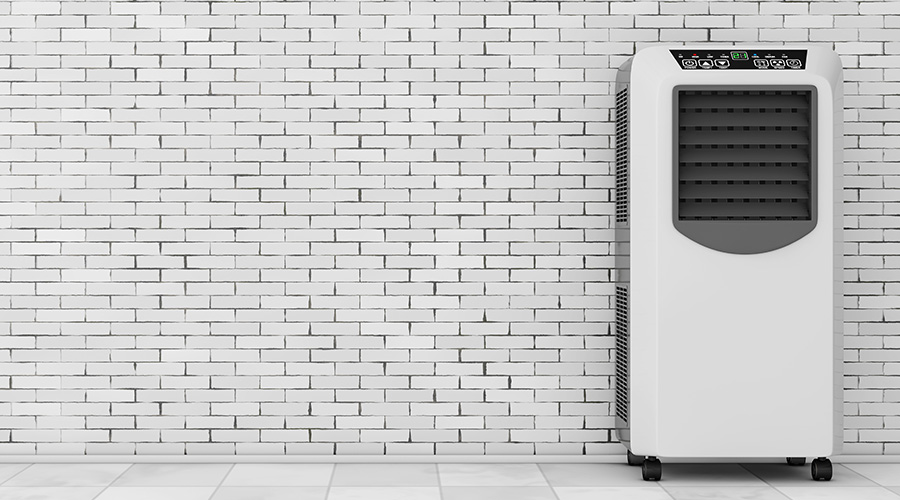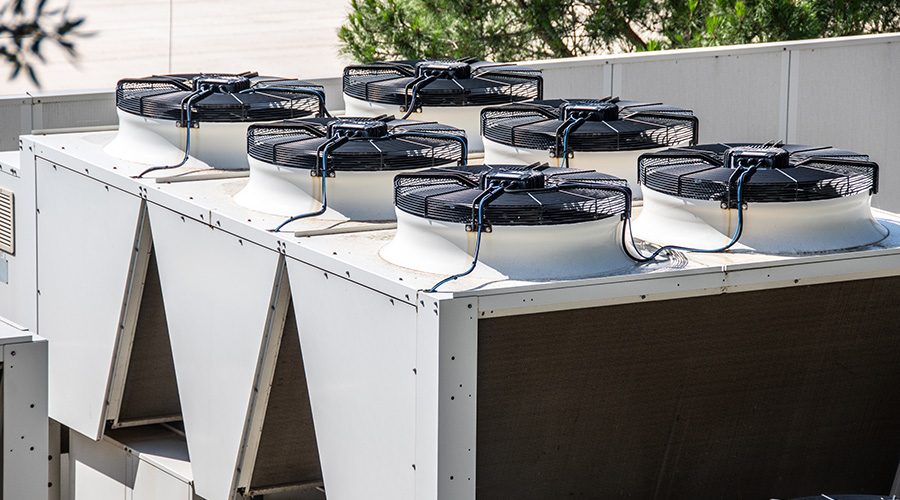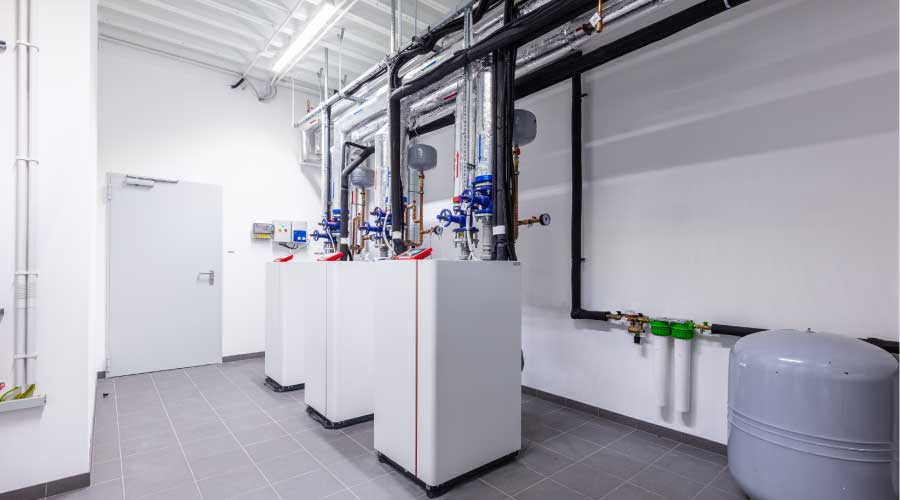5 Threats to Chiller Efficiency
By addressing these common roadblocks to efficiency, managers can extend chillers’ performance life and benefit the bottom line
Building chillers are the single largest energy-using component in most institutional and commercial and facilities. In many facilities, more than 50 percent of the annual electricity use can be attributed to the building chillers. So proper operation and maintenance of the building chillers should be a high priority in any facility energy management program.
It is surprising, however, to see just how often chillers are operated or maintained inefficiently or ineffectively, resulting in higher energy costs, lower system performance and reliability, and decreased equipment life.
While many factors contribute to decreased chiller efficiency, the five most common ones include: poor operating practices, ignored or deferred maintenance, ignored cooling tower maintenance, oversizing, and ignoring alternate-fuel chillers. While each of these factors poses a real and significant threat to chiller efficiency, all can be easily controlled or eliminated by maintenance managers.
Poor Operating Practices
Poor operating practices not only can decrease chiller efficiency, but also chiller life. Most such practices are the result of one of two situations: trying to get a chiller to do something that it was not designed to do or not understanding the consequences of a particular action.
For example, one common practice when trying to provide more cooling water to a facility is to increase the rate of chilled water flow through the chiller. The belief is that with a higher flow rate, more cooling water will be available.
In reality, however, increasing the flow rate through a chiller beyond the manufacturer’s recommendation actually reduces the operating efficiency of the chiller. Equally important, flow rates higher than those recommended increase the rate of erosion in the chiller’s tubes, leading to early tube failure.
The problem with poor operating practices is that their impact on chiller operation generally goes unnoticed. Chillers continue to operate, meeting various building loads under a range of conditions. Soon, however, poor operating practices become accepted as standard operating procedure, and one day, a problem in the chiller’s operation might become obvious, or the chiller might not be able to satisfy a cooling load that previously had never been a problem. When that occurs, technicians often blame the weather or the chiller itself; not the way the chiller is being operated and maintained.
Making certain that poor operating practices do not become standard operating procedure requires training personnel in both maintenance and operating practices. Proper training helps operating and maintenance personnel set up and operate chillers in an efficient manner.
It also allows maintenance personnel to develop an ongoing chiller maintenance program to ensure long and efficient equipment life. It allows maintenance personnel to recognize and correct problems early before they develop into more extensive and costly ones. Finally, training helps operating and maintenance personnel identify poor operating practices before they become accepted as standard operating procedure.
Ignored Maintenance
Although good maintenance practices are important to the efficient operation of all building equipment, there are few areas where this is more evident than in the maintenance of building chillers. For example, consider the impact that good maintenance can have on chiller efficiency.
Most new, high-efficiency centrifugal chillers carry a full-load efficiency rating of approximately 0.50 kW per ton. If that chiller is well maintained, in five years it can be expected to have a full-load efficiency of 0.55-0.60 kW per ton.
If maintenance has been ignored for that same chiller, it would not be surprising to find that the full-load efficiency had decreased to 0.90 to 1.0 kW per ton. On an annual basis, this means that a poorly maintained chiller will use 20-25 percent more energy annually to produce the same cooling.
Good chiller maintenance begins with keeping a chiller operating log. Recording chiller operating parameters regularly can provide maintenance personnel with a valuable diagnostic tool. Most chiller problems develop slowly over time. By tracking chiller data and reviewing it regularly, operators can identify trends in chiller performance, helping maintenance personnel pinpoint the underlying cause. While it is common for most facilities to maintain chiller operating logs, it is less common to find that someone regularly reviews them, which is essential. Refrigerant leaks, air leaks, tube fouling and other problems can be identified through a thorough reviews of operating logs.
Another important element in chiller maintenance programs is the performance of regularly scheduled inspections. These inspections — performed daily, weekly, monthly or annually — help to identify the health and operating efficiency of the chiller. They form the foundation of any chiller maintenance program.
Most can be performed without having to take the chiller out of service. Some, such as the annual inspection of the chiller’s tubes, require that the chiller be out of service for several days. While the inspections will identify the maintenance activities that need to be performed, inspections by themselves will not ensure the condition of the chiller. Maintenance personnel must follow thorough and perform the maintenance required activities.
Ignoring Cooling Towers
Cooling towers are critical components in the efficient operation of chiller systems. In most cases, the operation of the cooling tower determines the operating efficiency of the chiller, to a great extent. Towers that are in good condition, operated properly and well maintained allow chillers to operate at peak efficiency.
Even the slightest decrease in performance in cooling tower operation will have a major impact on chiller efficiency. For example, for each degree Fahrenheit increase in condenser-water supply coming from the tower, chiller efficiency will decrease by an average of 2 percent.
In spite of the important role that cooling towers play in chiller operation, they are often overlooked. Typically located on a building’s roof, cooling towers all too often suffer from being out of sight and out of mind. Performing proper maintenance is particularly important, given the environment in which cooling towers must operate.
Cooling towers are exposed to the elements and are good collectors of dirt, leaves and other debris that can clog air and water passages. Also, the warm, moist environment in which they operate promotes biological growth that can clog spray nozzles and reduce their heat-transfer efficiencies. Built up of solids in the cooling tower water also can clog spray nozzles and water passages.
Proper cooling tower operation requires that managers schedule regular inspections of towers and, if needed, repairs. Water-treatment programs must be implemented in order to keep the concentration of suspended solids in the tower water system within acceptable limits. Also, tower-fan and water-level controls must be operating properly.
Oversizing
Properly sizing a chiller also is important to its efficient operation because chiller efficiency drops off rapidly with decreasing load. Chances are, when the facility was new, the chiller was slightly oversized in order to allow some growth in cooling loads within the facility without having to replace the chiller.
But given the state of churn in facilities, the loads that a chiller faces after even just a few years can be vastly different from those for which it was designed to meet. This situation is particularly true if a facility has been modified to improve its energy efficiency.
For example, installing new windows or energy-efficient lighting systems often results in large decreases in cooling loads. As cooling loads decrease, the number of hours each year that a chiller operates at reduced load and, therefore, reduced efficiency increases, resulting in a decrease in its annual operating efficiency.
Oversizing is most easily corrected at the time when the chiller is replaced. By studying the operation and performance of the existing chiller and the cooling loads it is actually serving, managers can more closely size a new chiller to meet these needs. If a facility is served by multiple chillers, replacements can be sized so that different chillers of different capacities operate as needed to meet cooling loads, allowing operators to stage operation as needed.
Between chiller replacements, managers can help correct for oversizing by installing variable-frequency drives on existing chillers. These drives slow the operation of the chiller as cooling loads decrease, allowing chillers to operate at near full-load capacity over a range of loads.
Ignoring Alternative-fuel Chillers
A common mistake made when chillers finally wear out is a simple one-for-one replacement. If an old chiller was electric-drive centrifugal unit, a manager replaces it with a new electric-drive centrifugal unit. While the type of chiller installed 15 to 20 years ago might have made sense then, too many conditions have changed since then to simply assume that the same type of chiller is the best choice for the facility today.
Deregulation, real-time pricing for electricity, and technology advances all have worked to give managers choices when it comes to replacing existing building chillers. Deregulation and real-time pricing of electricity provide managers with the incentive to manage their electrical loads. The flatten the load, particularly during periods of peak use, lowering the cost for electricity.
With its high electrical load, an electric chiller is a very big target when looking for ways to reduce electrical loading and controlling costs. New technology chillers, including natural-gas driven centrifugal chillers and steam- or gas-fired absorption units, allow managers to use alternative fuels during times when electricity costs are high. By investigating the cost new-generation chillers and their impact on operating costs, managers can gain significant savings in energy costs without sacrificing either performance or reliability.
By being aware of these five common threats to chiller efficiency, managers can take steps to improve the performance of the chiller systems while improving the organization’s bottom line.
James Piper is a consultant based in Bowie, Md., with more than 25 years of experience with facilities management issues.
Related Topics:











